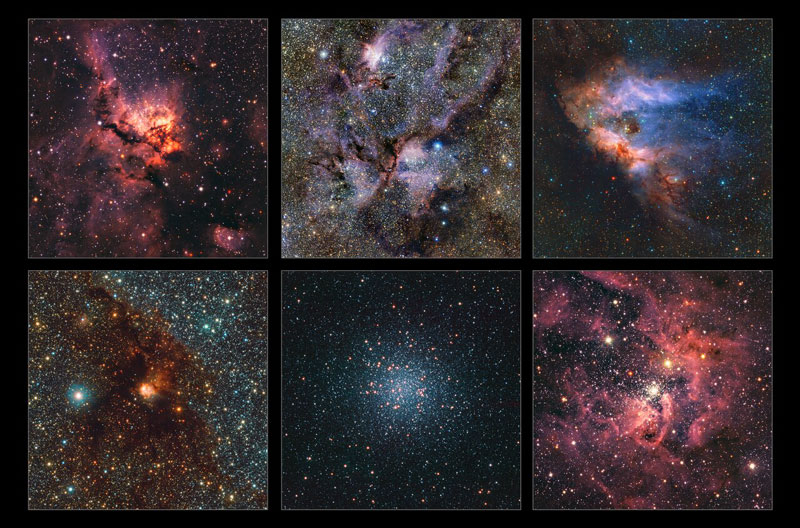Scientists at the European Southern Observatory have unveiled the most detailed infrared map ever made of our Milky Way galaxy. The map contains approximately 10 times more objects than before. The new atlas will serve as a source of invaluable data about our nearby stellar environment for decades, leading to many amazing discoveries.

Examples of images from the new atlas. Image source: ESO
Work on mapping objects in the Milky Way was carried out in two stages from 2010 to the first half of 2023. An international team of scientists led by members of the Southern European Observatory used the VISTA telescope in Chile, in the Atacama Desert, for observations. Data was collected in the infrared using the VIRCAM camera, which made it possible to see through dust and gas, to detect relatively cold objects – brown dwarfs and wandering planets, as well as newborn stars in cocoons of gas and dust clouds.
The images collected by scientists cover an area of the sky equivalent to 8,600 full moons. The volume of data collected exceeded 500 terabytes, making it the largest observation project ever carried out using the ESO telescope. Scientists have taken more than 200 thousand photographs of the Milky Way, which depict more than 1.5 billion objects.
«We made so many discoveries that we forever changed the understanding of our galaxy,” said Dante Minniti, an astrophysicist at Andrés Bello University in Chile who led the project.
The work done is all the more valuable because observations over 420 nights, including repeated surveys of the same areas, made it possible to track the movement of stars in space and, thus, create a partially three-dimensional map of stars in our galaxy. Scientists were also able to discover more variable stars, which act as a kind of time scale in the Universe, allowing them to accurately determine distances to objects. Finally, the infrared range helped us look deep into the Universe, into the region that is covered by the bright central part of the Milky Way, saturated with objects and dust.
The preparation of the project has already led to the appearance of 300 scientific papers. The use of materials from the new atlas promises even more research and discoveries that will surprise us in the coming years and beyond. The best part is that mapping the Milky Way will continue to a new level. ESO’s telescopes will soon be equipped with new and even more sensitive instruments to study our closest stellar environment in even more detail.